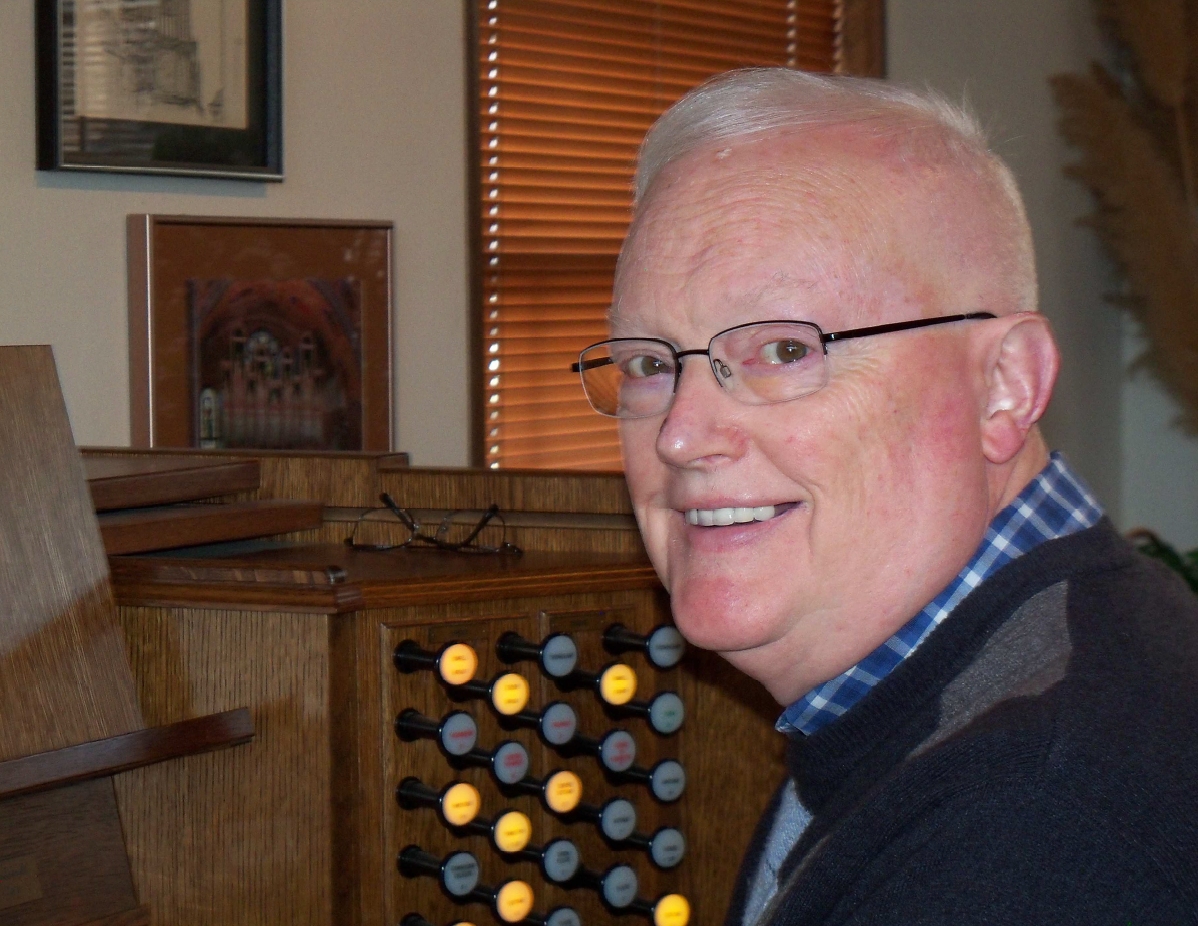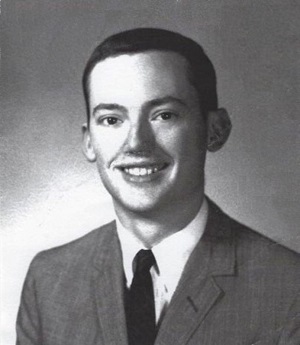Music by Franklin D. Ashdown

Franklin D. Ashdown (1942–2023) was an American composer and physician. He was born in Logan, Utah and began piano study at a young age. At age 13, he was recruited to play the organ for a local congregation. Ashdown earned degrees in science and medicine from Texas Tech University and the University of Texas Southwest Medical Center (Dallas). (He was in Parkland Memorial Hospital in Dallas when President John F. Kennedy was shot and brought into the emergency room, where Ashdown was recruited to be a liaison between reporters and doctors.)
Ashdown later studied organ with Judson Maynard and James Drake and was privately coached in composition by Fred Tulan (San Francisco) and Leonard Raver (The Juilliard School). Based for much of his life in Alamogordo, New Mexico, Ashdown pursued dual careers for more than three decades (1971–2007) as an internist and organist/composer. After his retirement from medicine in 2007, Ashdown focused exclusively on music. Ashdown’s numerous organ and choral compositions have been widely published, and his organ music became a frequent part of the repertoire of many performers throughout the USA. Ashdown’s music has been performed in venues ranging from Grace Cathedral in San Francisco and the Salt Lake Tabernacle to Saint Paul’s Cathedral in London and the Cathedral of Notre Dame in Paris. His music was featured on American Public Media’s “Pipedreams,” National Public Radio’s “All Things Considered,” and the Tabernacle Choir at Temple Square’s CBS broadcast, “Music and the Spoken Word.” Leonard Raver and Stephen Burns recorded his Requiem for the Challenger on the Classic Masters Label, and James Welch has included some of his solo organ music in his series of recordings for various labels.
Ashdown’s first notated compositions date from the early 1970s and represent a composer exploring possibilities for what his mature style might end up being. His studies and collaboration with Leonard Raver (and attendance in the 70s at the Hartt College of Music International Contemporary Organ Festival) led to some pieces that involved avant-garde elements. During the 80s and early 90s, there were parallel tracks in his output: unpublished concert pieces of a high level of difficulty that involved a blend of traditional and mildly avant-garde elements, and then more traditional-style pieces intended for church use and publication. One work of the blended approach that was published was the trumpet and organ duet Requiem for the Challenger (1986), which became widely played. The organ remained the core of his output as a composer, and the majority of the works he published were either organ solos or choral works with organ accompaniment. (Two concertos for organ and orchestra were also written: one in 1988 and one in 2011.)

From the mid 90s until the end of his life, Ashdown settled into his mature style, which was a highly lyric American neo-romantic idiom that blended lush tonal harmonies with textures that consistently flow and are animated with near constant motion (whether slow or fast). Ashdown was widely published, and despite many works appearing with Lutheran-centric publishers like Concordia and Augsburg Fortress, his approach to hymn-based pieces owed nothing to the American Lutheran chorale prelude tradition that developed out of Germanic (neo-)baroque models. Instead, Ashdown placed and developed the hymn tunes within his American lyrical tapestries with the same approach that he applied to his original (“free-style”) pieces. The number of voices ebbs and flows freely (rather than being controlled by strict post-baroque counterpoint) for both color and texture effects. A 1997 review by Dennis Schmidt in The Diapason stated about a hymn-based piece by Ashdown that “The harmonization of the tune not only supports the melody but has an interesting melodic character of its own, making the hymn tune appear as if oozing out of the harmonic color as opposed to dominating when entering.” This is in fact true of a good number of his hymn-based works, especially those with solo/accompaniment attributes.
Ashdown was certainly not the only American organ composer to write in a largely neo-romantic idiom. (Other composers like the older Dale Wood and the younger Charles Callahan produced much well-known material within this category.) However, various elements can identify an Ashdown piece as being distinctly his. One hallmark is that interludes and tonal changes between highly diatonic (or modal) sections are usually achieved not through traditional modulation but rather through the use of whole tone material to “disorient” from the past tonal center and provide the entry point into a new key. And unlike most composers writing in a neo-romantic style, most of the quiet lyric movements do not call for organ registration or swell box changes within them. Instead, Ashdown achieves an expressive push-and-pull and shaping of the lines through texture (thickening and thinning), chord voicing, register, and the small colorful variations to the harmony itself.
An interview from 2005 between Franklin Ashdown and Carson Cooman can be read here.
Carson Cooman has recorded a number of Ashdown’s works for organ.
The recordings can be listened to online at YouTube (full playlist) or downloaded as MP3 files.
Arioso (2007)
Published by Augsburg Fortress in “Evocations”
YouTube / MP3
Barcarolle (2010)
Published by OrganMusicDownloads.com
YouTube / MP3
Cantus aetherium (2015)
Published by Augsburg Fortress in “Adagios of Hope and Peace”
YouTube / MP3
Chorale Prelude on “Quittez, pasteurs” (2015)
Published by Leupold Editions
YouTube / MP3
Clair de lune (2007)
Published by Augsburg Fortress in “Evocations”
YouTube / MP3
The Dawning of Creation (2017)
Published by Augsburg Fortress in “Joyful We Adore”
YouTube / MP3
Dona nobis pacem (2022)
Published by GIA Publications in “Psalms of Peace”
YouTube / MP3
Elegiac Pastorale (2007)
Published by Augsburg Fortress in “Evocations”
YouTube / MP3
Fantasia on “Italian Hymn” (2008)
Published by Concordia Publishing House in “Eight Festive Postlude”
YouTube / MP3
Galilean Pastorale (2017)
Published by Augsburg Fortress in “Pastoral Psalms for Organ”
YouTube / MP3
Hosanna! (2017)
Published by Lorenz Publishing Co.
YouTube / MP3
Lamentation (2010)
Published by Augsburg Fortress in “Lenten Reflections”
YouTube / MP3
A Lenten Idyll (2004)
Published by Leupold Editions
YouTube / MP3
Lenten Idyll No. 2 (2007)
Published by Leupold Editions
YouTube / MP3
Lenten Sicilienne (2010)
Published by Augsburg Fortress in “Lenten Reflections”
YouTube / MP3
Lydian Pastorale (2017)
Published by Augsburg Fortress in “Pastoral Psalms for Organ”
YouTube / MP3
Lyric Aria: “I Need Thee Every Hour” (2019)
Published by Leupold Editions
YouTube / MP3
Nocturne (2005)
Published by Concordia Publishing House in “The Eventide Collection”
YouTube / MP3
Nunc Dimittis (2003)
Published by Concordia Publishing House in “The Eventide Collection”
YouTube / MP3
Oboe Arioso (2010)
Published by Augsburg Fortress in “Lenten Reflections”
YouTube / MP3
Pastorale on “Kremser” (2009)
Published by Leupold Editions
YouTube / MP3
Praeludium (2014)
Published by Zimbel Press/Subito Music Corp.
YouTube / MP3
Prelude on “Resignation” (My Shepherd Will Supply My Need) (2017)
Published by Augsburg Fortress in “Pastoral Psalms for Organ”
YouTube / MP3
Prelude on “Savior of the Nations, Come” (2015)
Published by Lorenz Publishing Co.
YouTube / MP3
Sketch on an Ancient Noël (Quem pastores laudavere) (2006)
Published by Leupold Editions
YouTube / MP3
Sonata da Chiesa (No. 1) (2012)
1) Andante cantabile (MP3)
2) Pastorella (MP3)
3) Alla marcia (MP3)
Published by Zimbel Press/Subito Music Corp.
YouTube / MP3
Sonata da Chiesa No. 2 (2013)
1) Intrada (MP3)
2) Canto (MP3)
3) Giubilo (MP3)
Published by Zimbel Press/Subito Music Corp.
YouTube / MP3 (complete)
Song Without Words (2022)
Published by GIA Publications in “Psalms of Peace”
YouTube / MP3
Sospiri (2005)
Published by Concordia Publishing House in “The Eventide Collection”
YouTube / MP3
Supplication (2015)
Published by Augsburg Fortress in “Adagios of Hope and Peace”
YouTube / MP3
Trumpet Dialogue (1976)
Published by Harold Flammer in “Just for Manuals, Vol. 2 (ed. Wolford)”
YouTube / MP3
Variations on “Bunessan” (2006)
Published by Leupold Editions in “The Keyboardist’s Year” (January 2007)
YouTube / MP3
Variations on “Il est né” (2010)
Published by Leupold Editions
YouTube / MP3
Voluntary on “Llanfair” (2008)
Published by Leupold Editions in “The Keyboardist’s Year” (March 2009)
YouTube / MP3
Voluntary on “Martyrdom” (2021)
Published by Leupold Editions
YouTube / MP3
